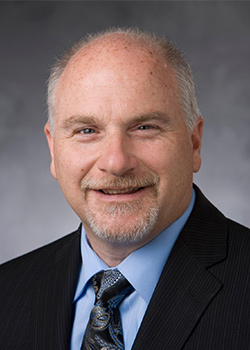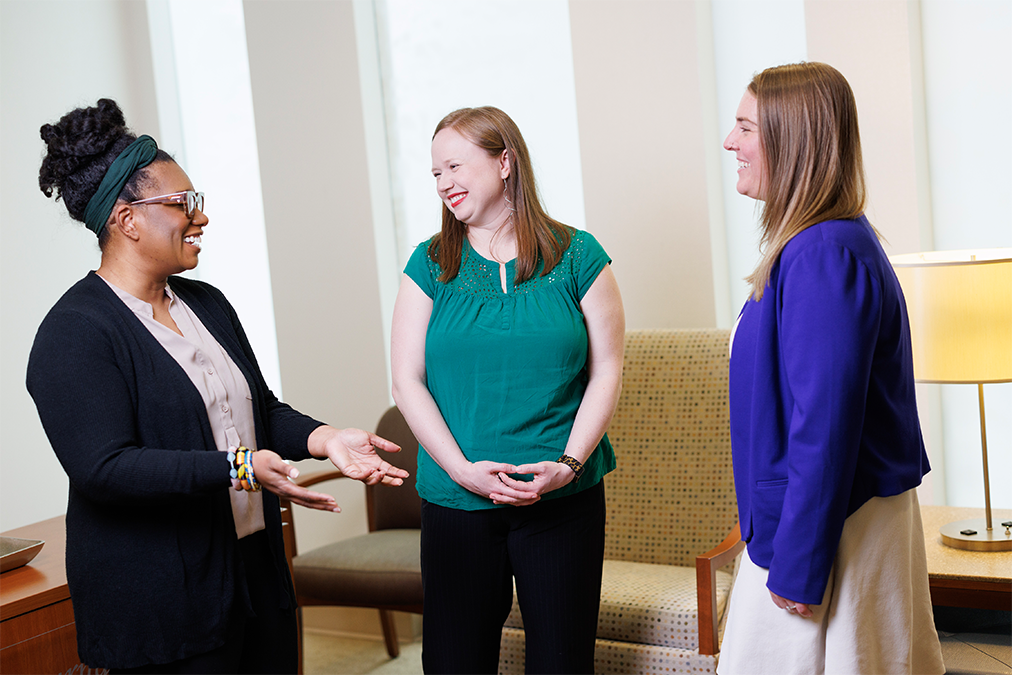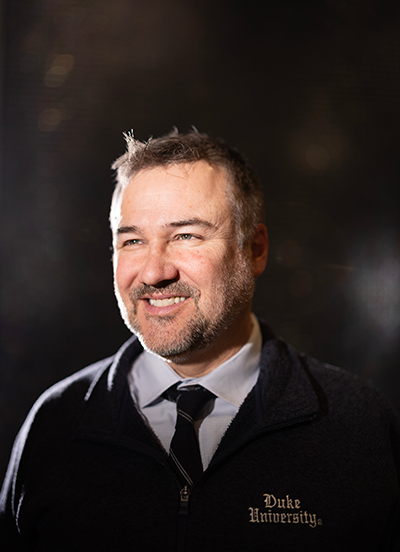
Duke Team Helps Thousands of Smokers Beat Their Addiction
James Davis, MD, was a third-year medical student when he realized he wanted to help people beat tobacco addiction. On his first night working in the hospital, he was called to the emergency room to see a patient he had previously admitted to the inpatient unit for chronic obstructive pulmonary disease.
“I walked in, and her face had turned black with ash,” Davis said. “At first, I had no idea what had happened.” Then he realized that she had lit a cigarette while using high-flow oxygen, and it had exploded.
Davis had gotten to know this patient, spending an hour conducting her history and physical. “She struck me as someone who was bright and capable. She was educated, had a career, and a family who loved her. But her tobacco addiction was so strong that she risked doing something dangerous to smoke a cigarette,” he said. “That experience was a wake-up call that it doesn’t matter how smart, well-adjusted, or successful you are. Addiction is an innate biological vulnerability, and it can impact anyone.”
Today, Davis leads one of the largest smoking cessation programs in the United States. The program, called Quit at Duke, includes 12 specially trained providers and helps more than 6,000 people each year.
Lives at Stake

In 2014, Steven Patierno, PhD, deputy director of Duke Cancer Institute (DCI) recruited Davis to Duke to start a smoking cessation program for cancer patients. The team has since expanded it to serve all patients at Duke University Health System.
“Drs. Steve Patierno, Mike Kastan, Cheyenne Corbett and others at DCI have provided the support necessary to turn this into a world-class smoking cessation program,” Davis said.
Today, with the health dangers of cigarettes undisputed, most people who smoke have tried many times to quit but can’t. “They need more than a patch and a pep talk,” said Davis, associate professor of medicine.
Cancer patients who smoke are often fighting for their lives. “If we’re going to ask them to quit smoking during one of the most stressful periods of their lives, we better give them some highly effective tools,” he said.
“Dr. Davis is very excited about what he does, and that is infectious,” said Quit at Duke program manager Jillian Dirkes, MSW, LCSW. “He always has energy and excitement to say, ‘Let’s find a new way to do this.’ That energy passes along to the rest of the team.”
A Tailored Approach
The providers at Quit at Duke live and breathe this work, with most of them dedicated to it full time. They create highly personalized plans, which often combine two or more medications with intensive behavioral treatment, Davis said.
Quit at Duke receives referrals from doctors in North Carolina, South Carolina, and Virginia, and the program also reaches out to Duke patients who use tobacco, Dirkes said. The outreach specialists making these calls have trained with and shadowed providers so that they can talk to patients knowledgeably. Understandably, patients can be hesitant, but the Duke team is prepared to meet them where they are.

“A lot of times patients are afraid they’re going to come to their first appointment and we’re going to take their cigarettes away,” Dirkes said. “Our outreach specialists are so important to help patients feel comfortable that they can move at their own pace in our program.”
Often, the team uses “adaptive pharmacotherapy,” in which the patient is started on an individualized medication regimen, then a few weeks later the team changes the treatment based on the patient’s response. Only after the patient shows a reduction in smoking are they asked to try to gradually quit.
“This is a new approach for tobacco treatment, and it really works,” Davis said. The approach roughly doubled quit rates compared to traditional medical therapy in a randomized, controlled clinical trial of Duke patients led by Davis and published in September 2023 in the journal JAMA Network Open.
Taming the Triggers
Tailoring medication is crucial for people with biological nicotine dependence. “If a person with severe nicotine dependence is unable to get nicotine, even for a couple of hours, they develop withdrawal symptoms,” Davis said.

These symptoms include restlessness, irritability, and lack of concentration. “These people will often wake up in the middle of the night because of withdrawal symptoms and will need a cigarette to reduce withdrawal so they can get back to sleep,” Davis said.
While a lot of research has focused on nicotine withdrawal, people who smoke often talk about “triggers” as the more immediate cause, Davis said. These are everyday behaviors, such as drinking a cup of coffee, that become neurologically paired with smoking. Inhaling a cigarette floods the brain with nicotine, which produces a surge of dopamine, a brain chemical associated with pleasure.
“If a person smokes while drinking coffee, the dopamine surge pairs coffee with smoking,” he said. Once that happens repeatedly, coffee becomes a trigger to smoke. “We can actually see a person’s brain activity respond to smoking triggers during functional imaging studies. A person who smokes may have 100 triggers. They can't go through their day without experiencing one trigger after the next.”
Mindfulness training helps smokers become more aware of triggers, so they can create strategies to manage them.
“For instance, if driving is a trigger, and the patient normally smokes in the car with the windows rolled up and the radio off, we might recommend they roll the windows down and turn the radio on,” Davis said.
In addition, mindfulness can help smokers become more aware when smoking is intertwined with stress, anxiety, or depression. “Mindfulness techniques can help a person change their relationship to stress and strong emotions, so they can experience those emotions without smoking,” Davis said.
Dirkes said she was drawn to this work because it empowers patients to take control.
“What I really love about tobacco cessation work is that it’s a component of health that patients can really grab onto,” she said. “They can choose to make change and make big impacts on their health.”
Angela Spivey is a senior science writer and managing editor for the School of Medicine’s Office of Strategic Communications.
For more information, patients can call 919-613-QUIT (7848) or visit dukehealth.org/quit. Quit at Duke offers visits in-person at clinics in Durham and Raleigh or by telehealth to anyone in North Carolina, South Carolina, and Virginia.
This story will be published in the Summer 2024 edition of Breakthroughs.
